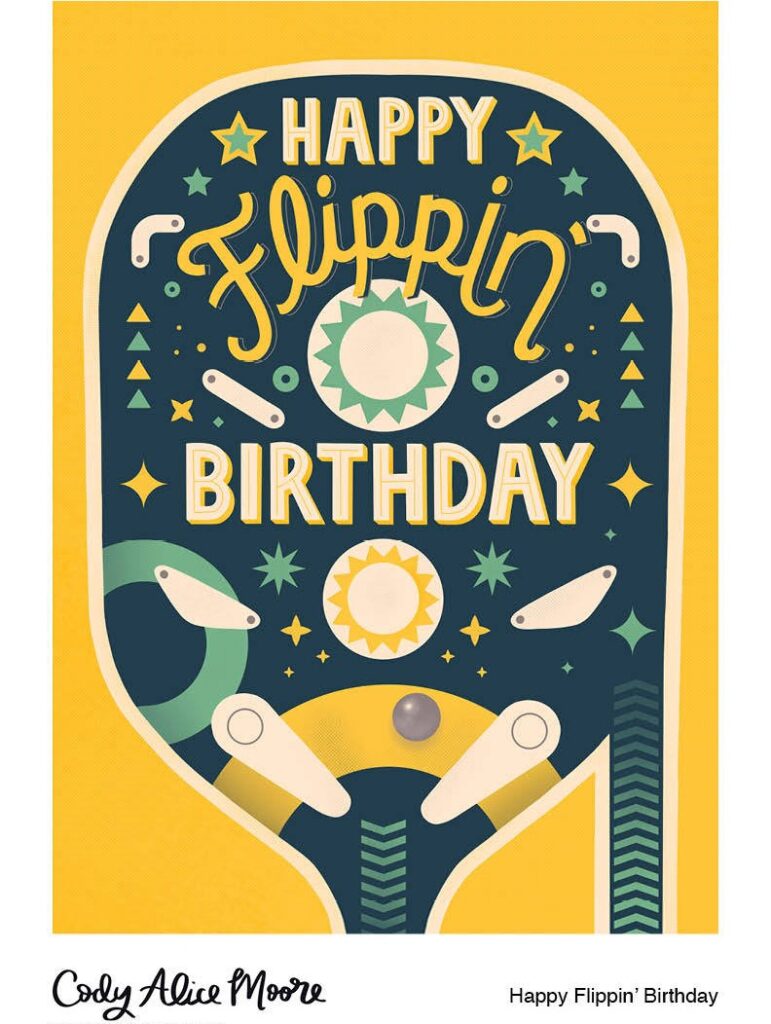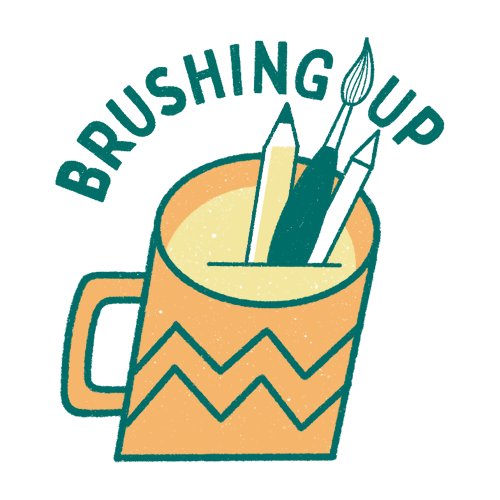I’m a big fan of lettering, especially puns and wordplay, that can be illustrated onto greeting cards, stickers, menu designs and more. I’ve made a lot of lettering pieces over the years and learned a few things in the process. Here are a few tips that have helped me to improve my lettering designs.

1. Hierarchy, Balance & Composition
Hierarchy and composition are crucial for creating effective lettering pieces. Which words in your sentence are more important? Think about how people read and see visuals and which parts of your illustration need to be bigger. Even with short lettering pieces, there are always parts of your text that take priority over others. Do you want to see more examples? Check the Brushing Up episode about this topic here: Hierarchy, Balance & Composition

2. Learn the Rules
Learn the basics of typography, different lettering styles and the anatomy of letters. This knowledge will help you create better letters and pleasing lettering compositions. When you understand the rules of typography, you can maintain uniformity in your lettering work, ensuring that all letters and characters look cohesive and harmonious. I like to collect ideas on Pinterest boards, and collect historical letters and fonts in books. More on what rules to learn and inspiration here: The Rules, Inspiration and Recommendations.
Related article: 10 SKILLSHARE CLASSES TO HELP YOU IMPROVE YOUR ILLUSTRATION SKILLS
3. Practice consistently
Dedicate time to practice different lettering styles regularly and experiment with creating your own. Practise what other people do and learn how their creative process works. You’ll start to figure out what works best for you; what you like and don’t like. I like to check YouTube tutorials and Skillshare classes to brush up on my lettering skills and learn about other artist’s creative processes. More actionable steps to keep up your lettering practice: Practice and how I learned.

4. keep it simple
Don’t fill up your design with too many words or decorative elements. Remember that your letters must be legible; don’t overcomplicate your lettering to the point that it becomes difficult to read. Even though the options in apps like Procreate are endless, it’s easy to overdo it. Even though I love using textures, I stick to just 1 or 2 different textures or texture brushes in my illustrations at once. You want to make the letters shine. How I keep my lettering designs and greeting card designs simple: Keep it simple.

5. start with Thumbnail sketches
Plan your designs starting with small sketches. This helps with planning your layouts and allows you to try out different options. Working on a small scale helps you put shapes and composition into place without being able to add too many details. I always start with a few thumbnail sketches, especially when working on a series. More on the sketch process: Thumbnail sketches

6. keep your quirks
Imperfections and quirks add personality and will help your work stand out. Remember that your audience wants to see your point of view. Look back at previous work you’ve made, and see what stands out, and what visual elements you can keep reusing to make your lettering pieces more uniquely yours. More about imperfections, personal style and quirks here: Quirks

7. Experiment with tools
I love using Procreate for my lettering designs, but digital apps might not be for you, or you simply haven’t found a process that works for you yet. Experiment with different tools and techniques, including techniques by hand. More about tools: Experiment with tools. And a few more recommendations and why they work well for lettering: Digital and Traditional Lettering Tools We Recommend and Why.

If you want to learn more about lettering, composition, behind-the-scenes on client projects we’ve worked on, and more, check out the Brushing Up episodes here:
If you enjoyed this post, you can support me by forwarding it to someone who might like it, pinning it on Pinterest, following me on Instagram, or checking out my own Skillshare classes. I will also regularly share more resources, recommendations and updates in my newsletter:


